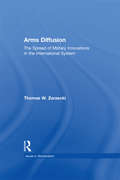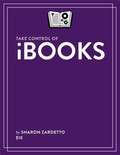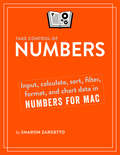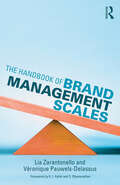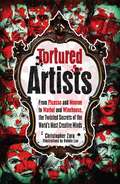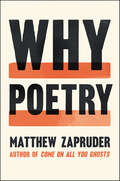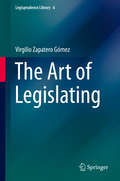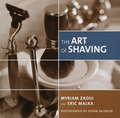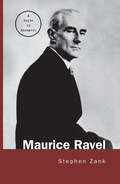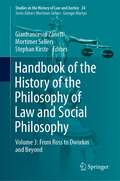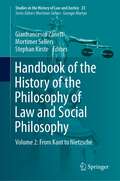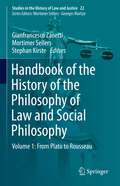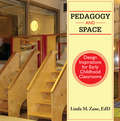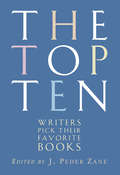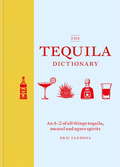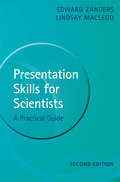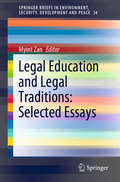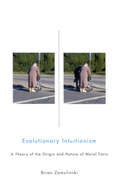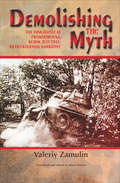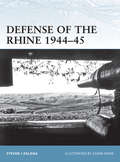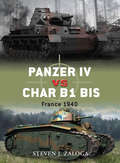- Table View
- List View
Arms Diffusion: The Spread of Military Innovations in the International System (Issues in Globalization)
by THomas W. ZarzeckiWeapons proliferation is one of the most pressing global concerns following the end of the Cold War. Despite the absence of an overarching superpower conflict, armaments and related technologies have continued to spread throughout the international system. This has been particularly true in areas like East Asia and the Middle East, where the traditional two party arms races are not readily apparent. This text addresses these concerns and shortcomings using data on fourteen specific military technological innovations that diffused throughout the international system from 1960 to 1997.
Educating China
by Peter Zarrow"In this major study, Peter Zarrow examines how textbooks published for the Chinese school system played a major role in shaping new social, cultural, and political trends, the ways in which schools conveyed traditional and 'new style' knowledge and how they sought to socialize students in a rapidly changing society in the first decades of the twentieth century. Focusing on language, morality and civics, history, and geography, Zarrow shows that textbooks were quick to reflect the changing views of Chinese elites during this period. Officials and educators wanted children to understand the physical and human worlds, including the evolution of society, the institutions of the economy, and the foundations of the nation-state. Through textbooks, Chinese elites sought ways to link these abstractions to the concrete lives of children, conveying a variety of interpretations of enlightenment, citizenship, and nationalism that would shape a generation as modern citizens of a new China"--Page 4 of cover.
Take Control of iBooks
by Sharon ZardettoIndulge your inner bibliophile with Apple's iBooks ebook reader!You know how to read a book, but do you know how to read and manage an entire library in iBooks, Apple's ebook-reading app for OS X Mavericks and iOS 7? On its surface, iBooks appears simple, but the more you add to your library, the more your questions will pile up. Get answers, plus learn about ebook-reading features that are not immediately obvious. If you need advice on collecting and reading ebooks in the Mavericks version of iBooks, want to know how iBooks stores and syncs your ebooks, or want to become more adept with iBooks on an iPad, iPhone, or iPod touch, this ebook is for you.Whether you're catching up on your favorite authors, poring over textbooks, or perusing work-related documents, self-described readaholic and Mac expert Sharon Zardetto teaches you the ABCs of iBooks. Sharon helps you optimize your onscreen reading environment, use the navigational controls (which differ depending on which type of ebook you're reading!), manage bookmarks, highlight important passages, make notes, and more. You'll also learn about auto-downloading and re-downloading purchases from Apple's iBooks Store, and where to find ebooks outside the iBooks Store.As you turn the virtual pages of Take Control of iBooks you'll read about:Ebook file formats: Here at Take Control, we often hear from people who aren't sure about the differences among the major ebook file formats--PDF, EPUB, Mobipocket, and Multi-Touch. If you're struggling with these basics (the difference between a hardback and a paperback is easier to understand), Sharon sets you straight, and helps you understand how the format of an ebook affects its behavior and features in iBooks.Mavericks mysteries: Discover what iBooks on your Mavericks Mac does with any ebooks that were previously in iTunes, where your library is located, and how to add EPUB, PDF, and Multi-Touch ebooks to iBooks. Synchronizing details: Find directions for syncing your Books library among your Apple devices. In addition to keeping copies of your ebooks on all your devices, you can sync your custom collection names and your position within any given book, as well as your bookmarks, highlights, and notes.Book acquisition: Whether you buy from Apple's iBooks Store, buy from a third party that sells ebooks in EPUB or PDF format (such as Take Control!), or make your own titles (such as with Apple's free iBooks Author--see Take Control of iBooks Author for help), you'll find out how to populate iBooks with your ebooks.Collection management: If you don't have time to "shelve" your ebooks, don't worry, because Sharon teaches techniques for taking advantage of iBooks' built-in organization and search function. But, the persnickety arrangers among us will learn how to further organize an iBooks library.Control your reading environment: Just as you may read best in the real world with the right lighting (and a bowl of grapes on hand, with a cat at your feet), you can also optimize your onscreen setup. You'll find tips for adjusting the font and type size, changing the page color, reading full-screen on the Mac, and even how to best "turn" the page.Enjoy the "e" in ebook: All those tiny electrons running around in your device can do more than display text on a screen. Sharon describes how to highlight passages, make in-book notes, insert virtual bookmarks, look up a selection in the dictionary (or on the Web--great for looking up a historical character or event that's mentioned in passing!) and more. A special chapter, "Explore Multi-Touch Books," guest-written by ebook expert Michael E. Cohen, helps you fully understand what's so special about Apple's Multi-Touch format and makes sure you can enjoy the special features, such as Study Cards, available in those ebooks.
Take Control of Numbers
by Sharon ZardettoGet serious with Numbers, Apple's powerful spreadsheet for the Mac!Apple's Numbers has become a grown-up spreadsheet (and it's free on every Mac sold since October 2013!), but many of us still haven't learned even the basics, much less been able to take advantage of its surprisingly deep collection of features.With the advice in this 330-page ebook, you'll learn to input, calculate, sort, filter, format, and chart your data with ease, as author Sharon Zardetto guides you through the basics all the way to power-user features like conditional highlighting, custom data formats, and star ratings. Richly illustrated with hundreds of annotated screenshots, the ebook also includes a hands-on example spreadsheet you can use to try what you're learning, plus a special tutorial chapter that helps you put it all together. Of course, you can also treat the book as a reference, using the Quick Start to focus on a topic of interest.The book covers Numbers 3.5, which works on any Mac running OS X 10.10 Yosemite.You'll learn how to...Handle the basics:Input data into a table.Choose the best chart type for your data.Add, modify, and position shapes, such as arrows, comments, and text boxes.Import/export from Excel, text, CSV, and older versions of Numbers.Set up page numbers and other header/footer information for printing.See what you want to see:Know what to expect when you sort by column.Hide and show columns.Merge and unmerge cells.Create rules that filter data to display only specific rows.Set up and view interactive charts.Make formulas:Work fluidly in the formula editor to create formulas.Make formulas from the tear-off tokens on the Quick Calc bar.Nimbly use various types of cell references in formulas.Understand how to use IF, TRUE, and FALSE in formulas.Take charge of logical operators (AND, OR, NOT) in formulas.Concatenate and break apart text.Strip extra spaces out of data.Find medians, modes, ranks, percentiles, and more.Create clever formulas that can:Calculate a sales discount based on whether a total is over or under a certain amount.Sort seemingly unsortable data, such as items described as Poor, Good, or Excellent.Take a column of cells, with each cell containing a full name, and move all the last names into a different column.Apply formatting:Add and remove grid lines and cell borders.Work with a cell's background fill.Format a chart so it looks fabulous.Set up conditional highlighting that appears only when data meets certain criteria.Ensure accurate data entry with cell formats like sliders, menus, and checkboxes.Use and create templates.Format faster with character, paragraph, list, shape, and table styles.
The Handbook of Brand Management Scales
by Lia Zarantonello Véronique Pauwels-DelassusThe Handbook of Brand Management Scales is a concise, clear and easy-to-use collection of scales in brand management. Scales are a critical tool for researchers measuring consumer insights, emotions and responses. Existing handbooks of marketing scales do not include (or include very few) scales related to brand management constructs. This book is the first to meet this need. Sample scales include brand personality, brand authenticity, consumer–brand relationships and brand equity. Each scale is included with a clear definition of the construct it is designed to benchmark, a description of the scale itself, how to use it and examples of possible applications in managerial and academic contexts. A much-needed reference point, this is a unique, vital and convenient volume that should be within reach of every marketing scholar's and manager's desk.
Tortured Artists: From Picasso and Monroe to Warhol and Winehouse, the Twisted Secrets of the World's Most Creative Minds
by Christopher ZaraGreat art comes from great pain.Or that's the impression left by these haunting profiles. Pieced together, they form a revealing mosaic of the creative mind. It's like viewing an exhibit from the therapist's couch as each entry delves into the mental anguish that afflicts the artist and affects their art.The scope of the artists covered is as varied as their afflictions. Inside, you will find not just the creators of the darkest of dark literature, music, and art. While it does reveal what everyday problem kept Poe's pen to paper and the childhood catastrophe that kept Picasso on edge, it also uncovers surprising secrets of more unexpectedly tormented artists. From Charles Schultz's unrequited love to J.K. Rowling's fear of death, it's amazing the deep-seeded troubles that lie just beneath the surface of our favorite art.As much an appreciation of artistic genius as an accessible study of the creative psyche, Tortured Artists illustrates the fact that inner turmoil fuels the finest work.
Tortured Artists
by Christopher ZaraGreat art comes from great pain. Or that's the impression left by these haunting profiles. Pieced together, they form a revealing mosaic of the creative mind. It's like viewing an exhibit from the therapist's couch as each entry delves into the mental anguish that afflicts the artist and affects their art. The scope of the artists covered is as varied as their afflictions. Inside, you will find not just the creators of the darkest of dark literature, music, and art. While it does reveal what everyday problem kept Poe's pen to paper and the childhood catastrophe that kept Picasso on edge, it also uncovers surprising secrets of more unexpectedly tormented artists. From Charles Schultz's unrequited love to J. K. Rowling's fear of death, it's amazing the deep-seeded troubles that lie just beneath the surface of our favorite art. As much an appreciation of artistic genius as an accessible study of the creative psyche,Tortured Artistsillustrates the fact that inner turmoil fuels the finest work.
Why Poetry
by Matthew ZapruderAn impassioned call for a return to reading poetry and an incisive argument for poetry’s accessibility to all readers, by critically acclaimed poet Matthew ZapruderIn Why Poetry, award-winning poet Matthew Zapruder takes on what it is that poetry—and poetry alone—can do. Zapruder argues that the way we have been taught to read poetry is the very thing that prevents us from enjoying it. In lively, lilting prose, he shows us how that misunderstanding interferes with our direct experience of poetry and creates the sense of confusion or inadequacy that many of us feel when faced with it. Zapruder explores what poems are, and how we can read them, so that we can, as Whitman wrote, “possess the origin of all poems,” without the aid of any teacher or expert. Most important, he asks how reading poetry can help us to lead our lives with greater meaning and purpose. Anchored in poetic analysis and steered through Zapruder’s personal experience of coming to the form, Why Poetry is engaging and conversational, even as it makes a passionate argument for the necessity of poetry in an age when information is constantly being mistaken for knowledge. While he provides a simple reading method for approaching poems and illuminates concepts like associative movement, metaphor, and negative capability, Zapruder explicitly confronts the obstacles that readers face when they encounter poetry to show us that poetry can be read, and enjoyed, by anyone.
The Art of Legislating (Legisprudence Library #6)
by Virgilio Zapatero GómezAny contemporary state presents itself as committed to the “rule of law”, and this notion is perhaps the most powerful political ideal within the current global discourse on legal and political institutions. Despite being a contested concept, the rule of law is generally recognised as meaning that government is bound in all its actions by fixed and public rules, and that these rules respect certain formal requirements and are enforced by an independent judiciary. This book focuses on formal legality and the question of how to achieve good laws—a topic that was famously addressed by the 18th century enlightened thinkers, but also by prominent legal scholars of our time. Historically, the canon of “good legislation” demanded generality, publicity and accessibility, and comprehensibility of laws; non-retroactivity; consistency; the possibility of complying with legal obligations and prohibitions; stability; and congruency between enacted laws and their application. All these are valuable ideals that should not be abandoned in today’s legal systems, particularly in view of the silent revolution that is transforming our legality-based “states of law” into jurisdictional states. Such ideals are still worth pursuing for those who believe in representative democracy, in the rule of law and in the dignity of legislation. The idea for the book stemmed from the author’s parliamentary and governmental experience; he was responsible for the Government of Spain’s legislative co-ordination from 1982 to 1993, which were years of intensive legislative production. The more than five hundred laws (and thousands of decrees) elaborated in this period profoundly changed all sectors of the legal order inherited from Franco’s dictatorship, and laid the foundations of a new social and democratic system. For an academic, this was an exciting experience, which offered a unique opportunity to put the theory of legislation to the test. Reflecting and elaborating on this experience, the book not only increases scholarly awareness of how laws are made, but above all, improves the quality of legislation and as a result the rule of law.
The Art Of Shaving
by Myriam Zaoui Eric MalkaThe average man will shave approximately 20,000 times over the course of his life, spending the equivalent of 139 full days doing it. He will shave off 27 feet of hair, from a total of 30,000 whiskers on his face. And he will probably be doing something wrong. So he’ll suffer nicks and cuts, ingrown hairs, and rashes; his five-o’clock shadow will arrive before lunch, his neck will be irritated and red, and he’ll get razor burn. Instead of reaping the benefits of a daily grooming regimen, he’ll only suffer. Needlessly. The Art of Shavingwill solve his problems (as well as the related problems of anybody whose cheek gets burned by his razor stubble). He’ll choose the correct brush and razor and blade; he’ll take more time lathering up properly and less time tending to bloody shirt collars. He’ll feel better and look better. And he’ll adjust his perception of this morning ritual, bringing art and passion to a daily routine.
Maurice Ravel: A Guide to Research (Routledge Music Bibliographies)
by Stephen ZankMaurice Ravel: A Research and Information Guide is an annotated bibliography concerning both the nature of primary sources related to the composer and the scope and significance of the secondary sources which deal with him, his compositions, and his influence as a composer and theorist.
Handbook of the History of the Philosophy of Law and Social Philosophy: Volume 3: From Ross to Dworkin and Beyond (Studies in the History of Law and Justice #24)
by Gianfrancesco Zanetti Mortimer Sellers Stephan KirsteThis Handbook discusses representative philosophers in the history of the philosophy of law and social philosophy, giving clear concise expert definitions and explanations of key personalities and their ideas. It provides an essential reference for experts and newcomers alike.
Handbook of the History of the Philosophy of Law and Social Philosophy: Volume 2: From Kant to Nietzsche (Studies in the History of Law and Justice #23)
by Gianfrancesco Zanetti Mortimer Sellers Stephan KirsteThis Handbook discusses representative philosophers in the history of the philosophy of law and social philosophy, giving clear concise expert definitions and explanations of key personalities and their ideas. It provides an essential reference for experts and newcomers alike.
Handbook of the History of the Philosophy of Law and Social Philosophy: Volume 1: From Plato to Rousseau (Studies in the History of Law and Justice #22)
by Gianfrancesco Zanetti Mortimer Sellers Stephan KirsteThis Handbook discusses representative philosophers in the history of the philosophy of law and social philosophy, giving clear concise expert definitions and explanations of key personalities and their ideas. It provides an essential reference for experts and newcomers alike.
Equality and Vulnerability in the Context of Italian Political Philosophy: Italian Efficacy (Studies in the History of Law and Justice #26)
by Gianfrancesco ZanettiOne of the main goals of this book is to determine if, in the works of some of the key authors in the history of Italian political philosophy, a notion of “efficacy” can be found. In legal philosophy, “efficacy” is the capacity a norm has to effectively influence citizens’ behavior. The “principle of efficacy” is that according to which an order or rule exists as such when it is followed effectively in practice. Here by “efficacy” I mean the idea that normative phenomena are self-justifying, without reference to extrinsic systems of value (such as “natural law”). The examinations of several texts undertaken here constitute reflections on this theme, without any claim to systematicity. They have been grouped together, roughly in historical order, by their common respect for the contexts within which they reason and reach decisions, which lends them a characteristic flavor of harsh realism that at times relies on a minimalist use of traditional normative categories.The second theme that emerges through the respective chapters (each of which constitutes the text for a lesson in a course for Ph.D. students) is that of the relationship between “equality” and “vulnerability.” Here the idea is to elaborate a concept of “vulnerability” that is not underpinned by what we in Italy call an “anthropology,” that is, a fixed notion of human nature. Instead this concept should be comprehensible and graspable solely on the basis of the recognition of decisions and actions that are merely “efficacious,” that function “for what they are, and what they do.” This recognition doesn’t even need to be explicitly articulated by these authors with any specific, deliberately conscious awareness.The goal is not to identify a precise tradition of thought, one which elaborates a given line of reflection, but rather to highlight certain “themes” that emerge in the texts examined, even as the authors write with and for their own specific, contingent set of motives, which differ from time to time and place to place. These authors include some who are widely known, such as Dante, Machiavelli, and Beccaria. At times they are figures who typify certain key historical episodes, such as the Risorgimento (Giuseppe Mazzini) or Fascism (Cesare Lombroso and Santi Romano), while others reflect certain aspects of a contemporary debate (Pasolini and the “Braibanti affair”).The book is based on lectures given for a 2021 Ph.D. Course at the University of California, Berkeley’s Department of Italian Studies.
Pedagogy and Space
by Linda ZaneThe intersection of architecture and education is a new and burgeoning area of interest. This book blends architectural design information with theory-based content explaining the foundations of early childhood environments. Colorful photographs of intentionally designed spaces will inspire early childhood professionals and architects alike as they dream, plan, build, and revamp settings. Inspired by the groundbreaking architectural book A Pattern Language: Towns, Buildings, Construction (Oxford University Press, 1977), this resource aims to glean architectural information regarding important design patterns in an environment and utilize them to provide insight into early childhood environments that are both developmentally appropriate and aesthetically pleasing.
The Top Ten: Writers Pick Their Favorite Books
by J. Peder ZaneWhat if you asked 125 top writers to pick their favorite books? Which titles would come out on top? You'll find the answer in The Top Ten: Writers Pick Their Favorite Books: the ultimate guide to the world's greatest books. As writers such as Norman Mailer, Annie Proulx, Stephen King, Jonathan Franzen, Claire Messud, Margaret Drabble, Michael Chabon and Peter Carey name the ten books that have meant the most to them, you'll be reminded of books you have always loved and introduced to works awaiting your discovery. The Top Ten includes summaries of 544 books--each of which is considered to be among the ten greatest books ever written by at least one leading writer. In addition to each writer's Top Ten List, the book features Top Ten Lists tabulated from their picks, including: * The Top Ten Books of All Time * The Top Ten Books by Living Writers * The Top Ten Books of the Twentieth Century * The Top Ten Mysteries * The Top Ten Comedies Already sparking debate, The Top Ten will help readers answer the most pressing question of all: What should I read next?
The Tequila Dictionary: An A–Z of all things tequila, mezcal and agave spirits
by Eric Zandona"As comprehensive as it gets" THE NEW YORK TIMESA tequila revolution is taking place, with more and more people learning to appreciate the rich culture, craft and flavour to be found in this unique spirit. The Tequila Dictionary is the drinker's guide to this wonderful world. With hundreds of entries on tequila and agave spirits covering everything from history, culture and ingredients to distilling techniques, cocktails and the many varieties of tequila, spirits expert Eric Zandona explores the truth behind this truly captivating drink.
Presentation Skills for Scientists: A Practical Guide
by Edward Zanders Lindsay MacLeodIt is now widely recognised that professional presentation skills are an indispensable cornerstone of a successful scientific career. This updated second edition provides a concise and accessible guide to preparing and delivering scientific presentations. Its highly practical 'how-to' style focuses on the issues that are of immediate concern to the busy scientist. The text covers all of the important aspects of scientific presentations, including knowing your audience, producing visual material, controlling nerves and handling questions. It also includes advice on presenting in English for non-native speakers, helping them to improve the clarity and effectiveness of their presentations. Links are included throughout the text to the accompanying website, which contains annotated video clips of speakers delivering a talk and demonstrates the common problems encountered, as well as exercises designed to overcome them. It also contains image files to demonstrate the design issues to consider when creating visual material.
Legal Education and Legal Traditions: Selected Essays (SpringerBriefs in Environment, Security, Development and Peace #34)
by Myint ZanThis book deals with aspects of legal education and legal traditions. Part I includes chapters on teaching Law of the Sea, legal ethics and educating lawyers as ‘transaction cost engineers’ as well as comparison of teaching law in a refugee camp and in a Malaysian University. Part II on legal and philosophical traditions includes essays on what later philosophers would have commented on Plato’s arguments in the Crito regarding ‘absolute obligation to obey the law’ and what Socrates would have said on two conversations in the 19th century novel Uncle Tom’s Cabin regarding the morality and legality of harbouring runaway slaves. Part II concludes with two essays regarding the applicability of the Hart-Devlin debate on the ‘enforcement of morals’ vis-à-vis the International Criminal Court and an essay on what the historian Arnold Toynbee would have commented on the ‘contingency’ v ‘teleology’ debate between two palaeontologists the late Stephen Jay Gould and Simon Conway Morris.• Legal education of interest to legal educators and students • Legal, political, moral philosophy as well as philosophy of history of interest to law, philosophy and history teachers, postgraduate and under graduate students• Aspects of legal ethics for law teachers, students and legal professionals• Interdisciplinary studies regarding law and economics, law and literature, law and social justice for law, humanities, social science academics and students.
Evolutionary Intuitionism: A Theory of the Origin and Nature of Moral Facts
by Brian ZamulinskiEvolutionary Intuitionism presents a new evolutionary theory of human morality. Zamulinski explains the evolution of foundational attitudes, whose relationships to acts constitute moral facts. With foundational attitudes and the resulting moral facts in place, he shows how they ground a plausible normative morality, give answers to meta-ethical questions, and provide an account of moral motivation. He explains the nature of moral intuitions and, thus, of our access to the moral facts. He shows that the theory makes confirmed empirical predictions, including the observable variation in moral views. The combination of intuitionism and evolutionary ethics enables Zamulinski to overcome the standard objections to both.
Demolishing the Myth: The Tank Battle at Prokhorovka, Kursk, July 1943: An Operational Narrative
by Valeriy Zamulin&“Comprehensive scholarship and convincing reasoning, enhanced by an excellent translation, place this work on a level with the best of David Glantz&” (Dennis Showalter, award-winning author of Patton and Rommel). This groundbreaking book examines the battle of Kursk between the Red Army and Wehrmacht, with a particular emphasis on its beginning on July 12, as the author works to clarify the relative size of the contending forces, the actual area of this battle, and the costs suffered by both sides. Valeriy Zamulin&’s study of the crucible of combat during the titanic clash at Kursk—the fighting at Prokhorovka—is now available in English. A former staff member of the Prokhorovka Battlefield State Museum, Zamulin has dedicated years of his life to the study of the battle of Kursk, and especially the fighting on its southern flank involving the famous attack of the II SS Panzer Corps into the teeth of deeply echeloned Red Army defenses. A product of five years of intense research into the once-secret Central Archives of the Russian Ministry of Defense, this book lays out in enormous detail the plans and tactics of both sides, culminating in the famous and controversial clash at Prokhorovka on July 12, 1943. Zamulin skillfully weaves reminiscences of Red Army and Wehrmacht soldiers and officers into the narrative of the fighting, using in part files belonging to the Prokhorovka Battlefield State Museum. Zamulin has the advantage of living in Prokhorovka, so he has walked the ground of the battlefield many times and has an intimate knowledge of the terrain. Examining the battle primarily from the Soviet side, Zamulin reveals the real costs and real achievements of the Red Army at Kursk, and especially Prokhorovka. He examines mistaken deployments and faulty decisions that hampered the Voronezh Front&’s efforts to contain the Fourth Panzer Army&’s assault, and the valiant, self-sacrificial fighting of the Red Army&’s soldiers and junior officers as they sought to slow the German advance and crush the II SS Panzer Corps with a heavy counterattack at Prokhorovka. Illustrated with numerous maps and photographs (including present-day views of the battlefield), and supplemented with extensive tables of data, Zamulin&’s book is an outstanding contribution to the growing literature on the battle of Kursk, and further demolishes many of the myths and legends that grew up around it.
Defense of the Rhine 1944-45
by Steven Zaloga Adam HookThe Rhine River represented the last natural defensive barrier for the Third Reich in the fall of 1944. Although Hitler had been reluctant to allow the construction of tactical defense lines in France, the final defense of the Reich was another matter. As a result, construction of a Rhine defense line began in September 1944. Steven J Zaloga examines the multiple phases of construction undertaken to strengthen the Westwall (Siegfried Line), to fortify many of the border villages, and finally to prepare for the demolition of the Rhine bridges. Using detailed maps, color artwork, and expert analysis, this book takes a detailed look at Germany's last line of defense.
Panzer IV vs Char B1 bis
by Steven Zaloga Richard ChasemoreThe Battle of France in 1940 involved the first large-scale tank-against-tank battles in history. The massive clashes at Stonne, Hannant, and Gembloux involved hundreds of tanks on both sides, yet have faded from memory due to the enormity of the French defeat. This book examines two of the premier opposing tanks of the Wehrmacht and the French Army, the German PzKpfw IV and the French Char B1 bis. With a complete history of the design, development, and deployment of these armored fighting vehicles, the story of these great battles is brought to life in a highly illustrated format.From the Trade Paperback edition.
Room for Improvement
by Amy ZalneraitisIf you've ever lived with a roommate, you're all too familiar with the dark side of splitting rent: your favorite lipstick mysteriously gone missing, dishes left "soaking" in the sink for a week, and far-too-intimate noises coming from the adjacent bedroom as you desperately try to sleep. But roommate resentment doesn't have to become a pattern. A comprehensive and sassy guide to roommate living for post-college women, Room for Improvement explains how a little cooperation can lead to smoother cohabitation. Harnessing her own and others' experiences, Amy Zalneraitis delivers essential roommate dos and don'ts, hilarious (and often horrifying) anecdotes, and invaluable tips from experts, and covers such sanity-saving topics as: Checks and Imbalances: Keeping Financial Friction at Bay Idiosyncrasies or Idiosyncrazies? There's Eccentric, and Then There's Psychotic Dust Bunnies Are Not Real Pets: What to Do with a Filthy Roommate Is That My Underwear You're Wearing? Sharing Clothes Without Exchanging Blows ...and much, much more. Candid and laugh-out-loud funny, Room for Improvement will help you iron out existing roommate problems, prevent future ones, and, just as important, spot and address bad roommate behavior in yourself.
